Why Durham’s Beamish Living Museum Is the Best in the Country
This website uses affiliate links which may earn a commission at no additional cost to you. As an Amazon Associate I earn from qualifying purchases.
Updated: 16th November 2021
Okay, hand up, it can often take quite a lot for me to get excited about a museum, let alone spend a whole day at one and still want to go back again, but Beamish, The Living Museum of The North was perhaps the first time that has happened – and it’s certainly the first time I’ve felt compelled to write a whole post dedicated to a museum!
Located in the Durham region of England, not far from the historic city of Durham or indeed Newcastle, the Beamish Living Museum is home to countless interactive experiences that are well worth travelling for.
If you’re not familiar with the concept of a living museum, it basically works like an ordinary museum but with interactive elements and actors playing the characters that would be typical of the museum experiences; think museum meets interactive theme park. There are plenty of reasons to visit Beamish Living Museum, so much so that even with a full day there, I didn’t get to experience everything, and as an adult, I was utterly entertained – I don’t think you can write this one off as just for the kids.
If you want to get a taste of just how vast Beamish is, take a look at their interactive map. To see the full 300-acre site in all its glory, luckily, a day ticket is good for return visits within a year, as there is so much to see!
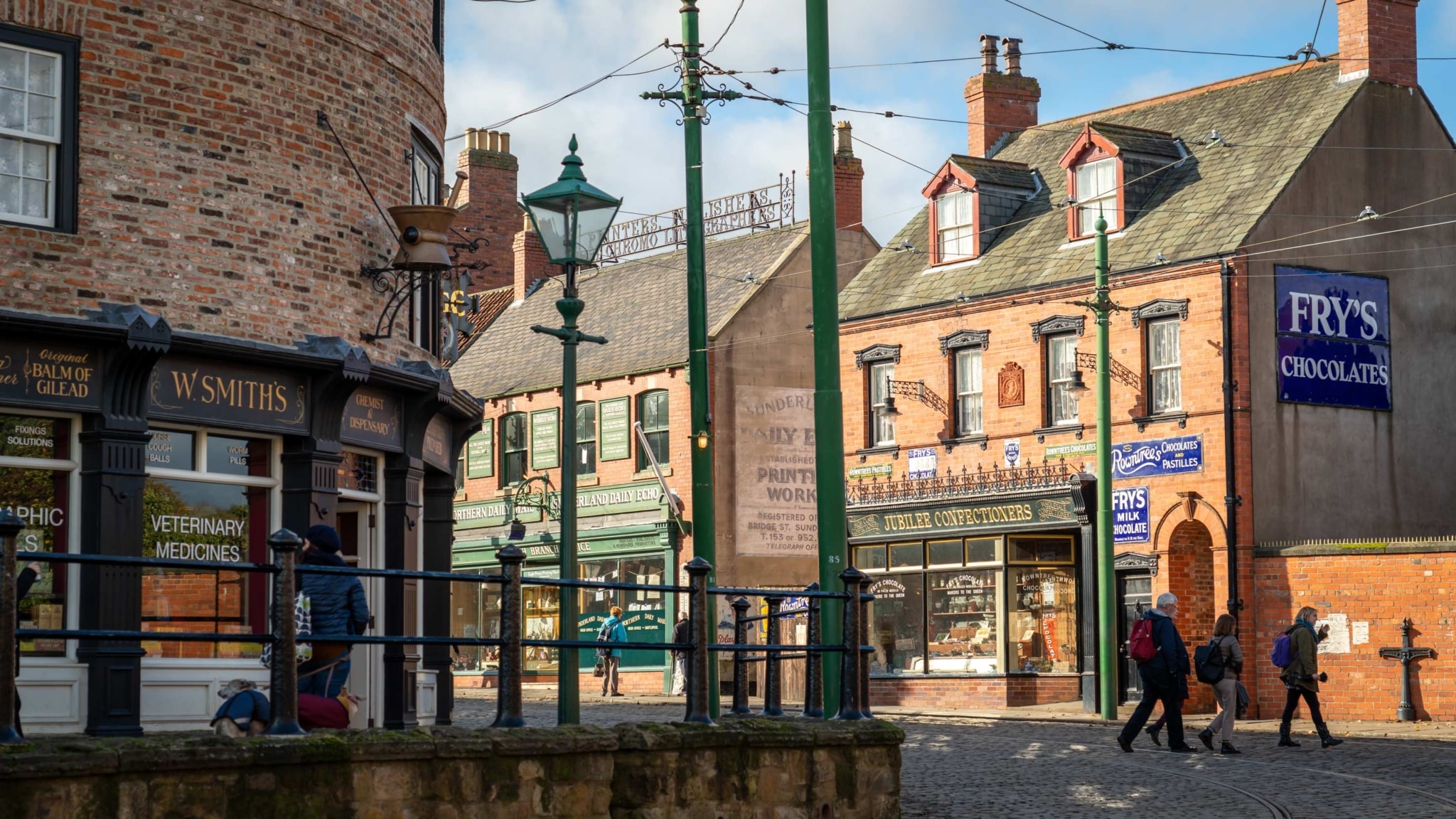
Getting around on old-school public transport
One of the coolest things about Beamish is the sheer scale of the museum. With so many buildings across the different towns and villages, you can walk between each one, and journey times can be up to 15 minutes, such is the size.
For those who don’t fancy walking though, one of the main draws to Beamish is the variety of traditional transport options you can experience here.
While some of the main trams, trains and buses in Beamish are originals, others are replicas of those that would have been on the streets in the 1900s. With conductors, train staff and station crew all in traditional outfits too, it’s a charming way to get around and get an introduction to the different time periods that Beamish displays.
My favourite was the trams, with the 1900 Sunderland 16 tram being the coolest IMO, which has been loving restored. Some of the trams are over 100 hundred years old, and there are six different types to try and catch.
There is also a range of traditional buses; although quite a few of these are replicas, there are a couple of originals.
The train station is a full-size and fully working option, while the traditional Steam train, complete with coal-smeared drivers, runs up and down a little track regularly.
In addition to all the regular running public transport, you’ll occasionally see other traditional methods of transportation moving around, such as old-fashioned bicycles, motorbikes and horse-drawn vehicles.
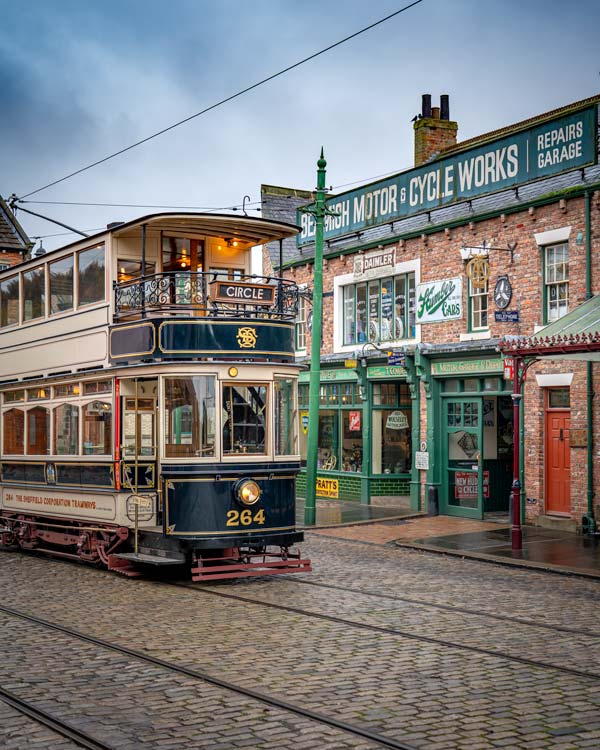
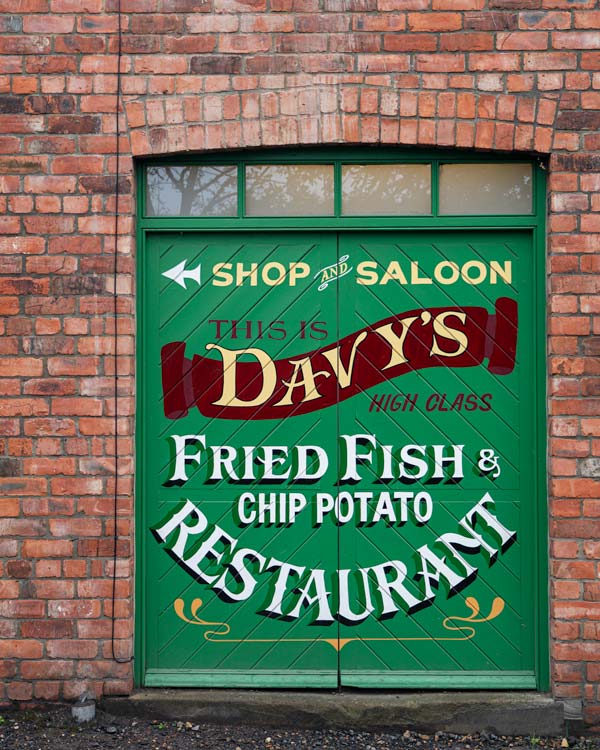
Living day-to-day life in the shops of the 1900s town
The best part of Beamish for me was the 1900s town, as I found it the most interactive and fun to experience.
It has been built so well, with no attention to detail spared, so much so that the recent Downtown Abbey Movie filmed quite the chunk here, with the garage likely being the most recognisable spot.
There are so many things to experience here, from the Bakey cooking up loaves of bread in the real oven that you can purchase from the clerk at Barclays bank opening accounts. You can nip into traditional shops like chemists, visit different houses where people are going about their chores, and even go to the Dentist, where a bearded man will walk you through all the worrying-looking apparatus from days gone by.
Not one to shy away from the chance to dress up, I headed to the Photography Studio, where countless outfits ranging from the tame gentleman through to full-blown gowns were available alongside multiple props to set the scene. Once you are all glamorous and ready for your photo, the studio snaps some pictures from behind a traditional camera, although luckily, their processing technology is a bit more modern, and you can walk away with the photos from the session.
If you want to chill out, you can dip into the traditional pub, The Sun Inn, for a pint of bitter, or stock up on old-school sweets from the shop next door, if you are lucky, the chocolatier at the back will have a fresh batch for you to try!
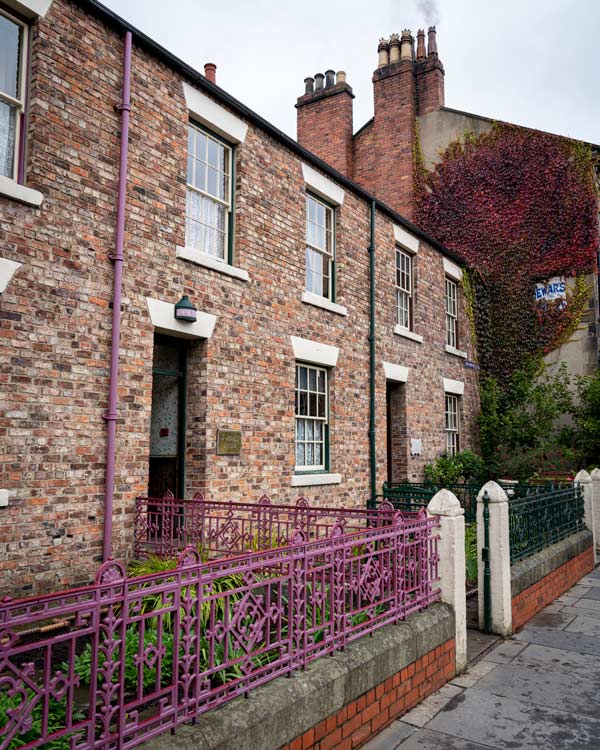
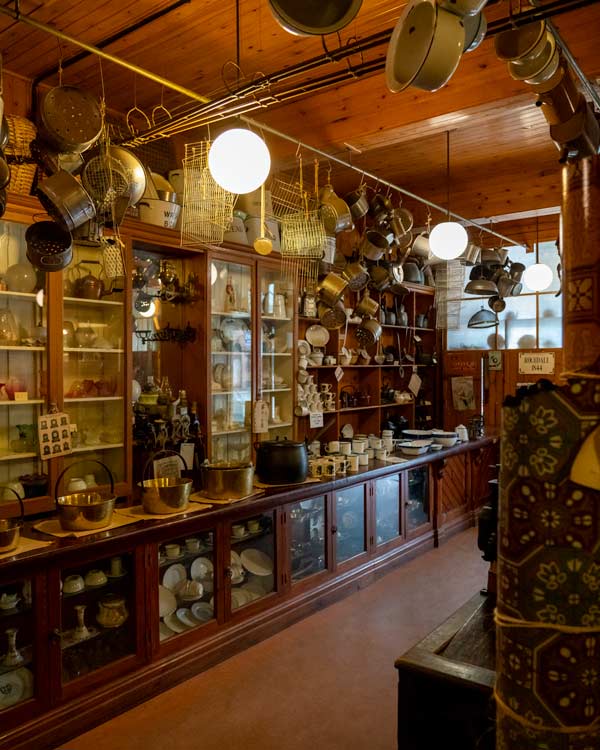
Discover Durham’s mining heritage in the 1900s village
Mining and coal played a considerable part in the North East of England, and in the 1900s village, this is honoured and presented in many ways.
Firstly, for kids, this is likely the highlight, as there is not only a chapel and selection of terraces houses with owners inside to entertain but also Beamish School where you can sit behind tiny little desks in class with a teacher writing up lessons from the times on the blackboards.
In the Collier you can head on a mine tour, and go down underground to see what mining conditions would have been like, complete with lanterns.
As well as a cake and tea hall, there is the fantastic Davys Fish and Chip shop here, but warning, it’s so popular you should get here early to beat the crowds. Serving up beer-battered fish with lashings of vinegar, the shop is the ideal reconstruction, with a real 1900s oven and the right type of oil. Apparently, they taste exactly like they would have and come in newspaper clippings from the time.
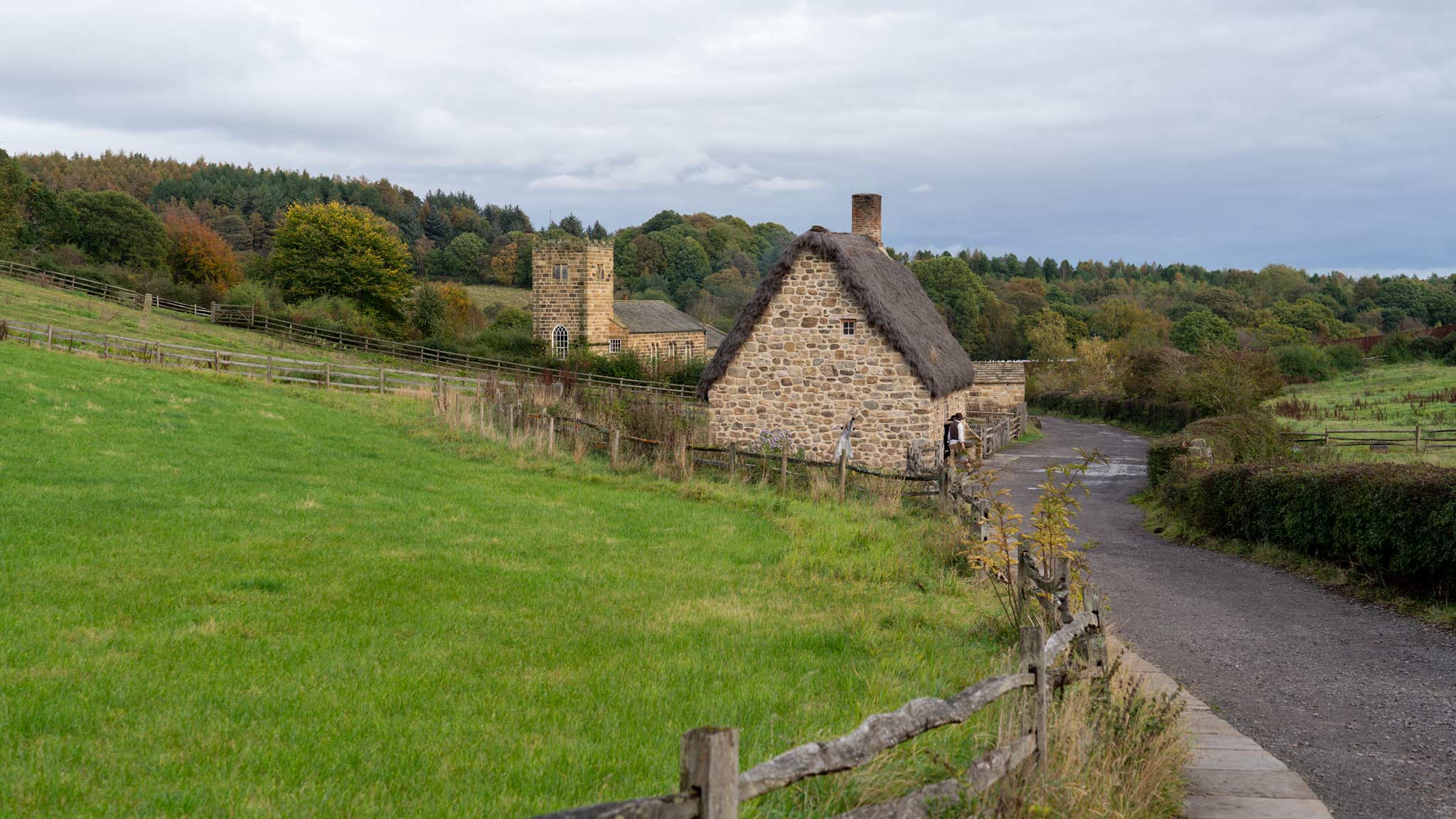
Plenty more experiences to enjoy across different decades
With so much going on at Beamish, honestly, you will be hard-pressed to finish it all in one day, but try your best by getting in at the opening time. If not, the day ticket allows for a return entrance within the year.
In addition to the town and village where I spent most of my time, there is also a 1940s farm which shares an insight into life during the second world war, so important because of the amount of food imported during the war and the fear of not having enough homegrown produce.
In the 1820’s village, you’ll find the steam train I mentioned above, but also old town-halls and houses which you can venture into and be greeted by actors.
With a traditional fairground, a 1950’s town about to open, and likely even more that I didn’t even get to have a peek at, I’m sure you see just how much there is to experience at Beamish Living Museum!
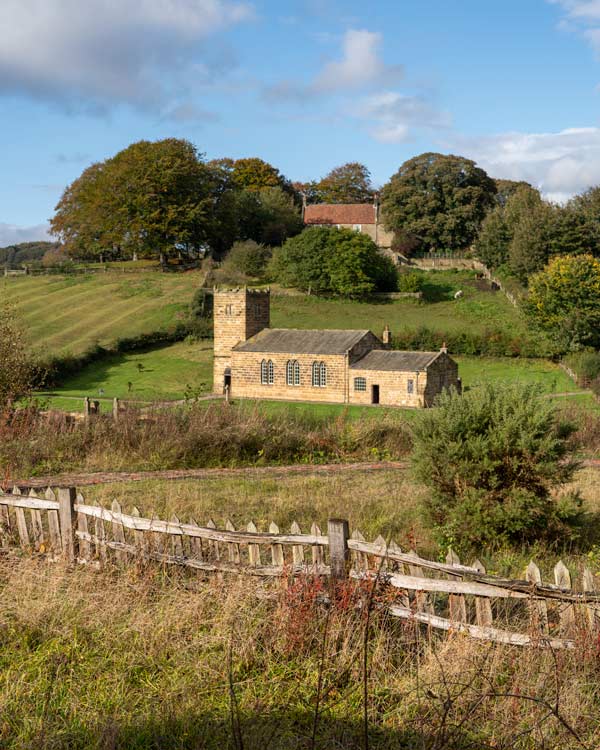
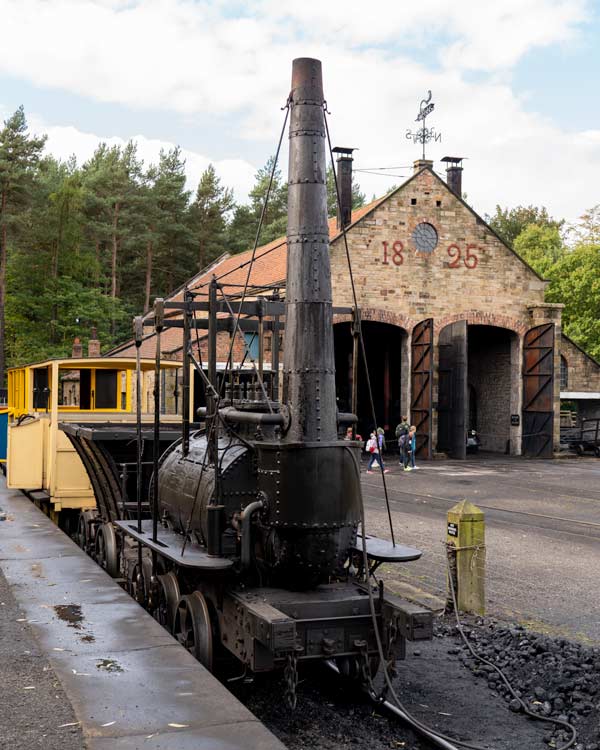
Other awesome museum experiences in the Durham Region
Bishop Auckland Castle – This newly renovated and reopened castle has been opened as a ‘lived in’ museum – think banquets half-eaten on dining room tables and wardrobes you can rustle around in. A grand building with another interactive element.
The Bowes Museum – Built as a gift for his wife, The Bowes Museum also embraces the experience side, and during my visit, they had lots of Lego models of what was on display, and you could get involved. There were also modern collections you could take part in at home, and it’s set on some beautiful grounds.
Locomotion Museum – Discover the history of British Rail, walk around the old cabins, and see trains from years gone by in the Locomotion Museum.
To read more about these excellent museums, and to visit the Durham region of England in more depth, check out my full video guide to Durham. I also have an article about how to spend a long weekend in Durham exploring UNESCO castles and cathedrals, fantastic museums, and epic dales with historic castles.
But whatever you do, be sure to make a beeline for Beamish when you visit!

Need to know: Durham
A few tips and tricks to make planning your visit to Durham even easier.
How to get to Durham? The nearest airport to Durham is Newcastle Airport, which has plenty of international flights. From here, you can easily take the metro to Newcastle City and then a train to Durham. The total journey should be less than one hour, door to door.
If you are already in the UK, there are regular train connections to Durham on both high-speed and standard routes. The fastest journey time from London is about 2:45, and from Edinburgh, it is around two hours. As always in the UK, booking your train tickets as far in advance will save you money; I personally use www.thetrainline.com.
Getting to Beamish? If you don’t have a car, getting to Beamish Museum from Durham is fairly straightforward. You can take the bus from Durham Centre, Bus 21, to Chester-le-Street and then here change to Stand G, to take bus 28A to Beamish. Total journey time is under an hour, and you can follow the same route on the return.
Accessibility in Beamish? The Beamish Museum website has a dedicated accessibility page, and they also have modified transport to move around the villages.
Find out more: For help planning your trip, and discovering even more awesome places in Durham to visit and their packed-out events calendar, check out the official website at www.thisisdurham.com/amazing




Leave a Reply
Want to join the discussion?Feel free to contribute!